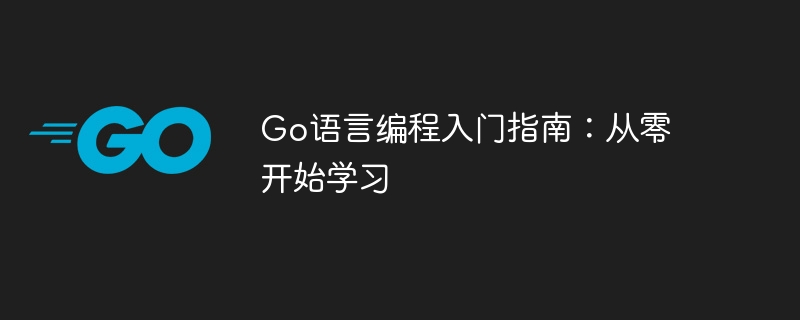

"Go Language Programming Guide: Learn from scratch, specific code examples are required"
Go language is a programming language developed by Google. It has high efficiency , simple and powerful features, suitable for developing various types of software. This article will provide beginners with a comprehensive introductory guide to Go language, starting from scratch, including basic concepts, syntax, commonly used libraries and specific code examples.
First, we need to install the Go language development environment. You can visit the official website (https://golang.org/) to download the installation package for the corresponding operating system and install it according to the prompts. After the installation is complete, you can use the command line to enter go version to verify whether the installation is successful.
Next, create a new Go project. You can execute the following command on the command line:
mkdir hello-go cd hello-go
The basic syntax of Go language is similar to C language, with basic concepts including variables, constants, operators, conditional statements, loops, etc. The following is a simple sample code:
package main
import "fmt"
func main() {
var a, b int
a, b = 10, 20
fmt.Printf("a = %d, b = %d
", a, b)
sum := a b
fmt.Printf("sum = %d
", sum)
if sum > 20 {
fmt.Println("sum is greater than 20")
} else {
fmt.Println("sum is less than or equal to 20")
}
}The Go language has a rich set of standard libraries and third-party libraries that can meet various needs. The following is an example of using the fmt library to output Hello World:
package main
import "fmt"
func main() {
fmt.Println("Hello, World!")
}Now, let us implement a simple calculator program. The user enters two numbers and an operator, and the program outputs the calculated result. The following is sample code:
package main
import (
"fmt"
)
func main() {
var a, b float64
var operator string
fmt.Print("Enter first number: ")
fmt.Scanln(&a)
fmt.Print("Enter second number: ")
fmt.Scanln(&b)
fmt.Print("Enter operator ( , -, *, /): ")
fmt.Scanln(&operator)
var result float64
switch operator {
case " ":
result = a b
case "-":
result = a - b
case "*":
result = a * b
case "/":
if b == 0 {
fmt.Println("Error: Cannot divide by zero")
return
}
result = a / b
default:
fmt.Println("Invalid operator")
return
}
fmt.Printf("Result: %f
", result)
}Through the guidelines and code examples in this article, I hope readers will have a deeper understanding and mastery of the Go language. Keep learning and practicing, and I believe you will become more and more proficient in this powerful programming language. I hope you can write better programs in the world of Go language!
The above is the detailed content of Beginner's Guide to Go Language Programming: Learn from Scratch. For more information, please follow other related articles on the PHP Chinese website!
 Usage of Type keyword in Go
Usage of Type keyword in Go
 How to implement linked list in go
How to implement linked list in go
 What are the Go language programming software?
What are the Go language programming software?
 How to learn go language from 0 basics
How to learn go language from 0 basics
 What are the methods to implement operator overloading in Go language?
What are the methods to implement operator overloading in Go language?
 What are the operators in Go language?
What are the operators in Go language?
 How to change phpmyadmin to Chinese
How to change phpmyadmin to Chinese
 What are the application scenarios of PHP singleton mode?
What are the application scenarios of PHP singleton mode?
 Java rounding method
Java rounding method




